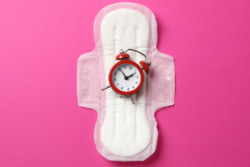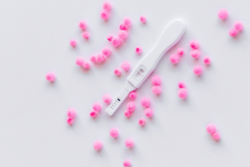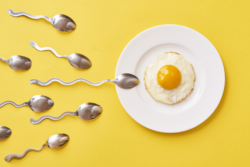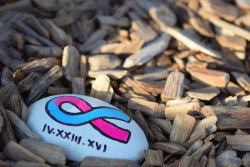There are a few different ways you can naturally track your cycles and find out when you might be ovulating. These methods help you track down:
- When you’re most fertile (cervical mucus)
- When you’re about to ovulate (LH urine test strips)
- When you’ve likely just ovulated (basal body temperature—BBT)
Tracking changes in your vaginal discharge can help you identify cervical mucus (CM): an egg-white-like discharge that is slippery, clear, stretchy, and very lubricating. Days that you experience this type of discharge are often your most fertile days.
Meanwhile, at-home Ovulation Predictor Kits (OPKs) can help you identify your LH surge: the hormone that will trigger ovulation. This can tell you when ovulation is likely to happen (about 24 to 36 hours after your LH peak).
However, some people don’t experience major changes in cervical mucus, or LH testing may be too expensive to continue for more than a few cycles. One basic at-home tracking tool you can try is recording your Basal Body Temperature (BBT).
Although not super accurate on its own for tracking ovulation, it can help you predict when your ovulation is likely to occur in future cycles. When you combine it with CM and OPK tracking, it makes identifying your fertile window (best days for trying to conceive) much easier and more accurate.
Your BBT is also called your “waking temperature.” It’s your body temperature upon first waking, but before you start moving or getting out of bed. You will naturally have some variations in daily waking temperatures, going up or down 0.2 to 0.4 degrees. However, after ovulation, as progesterone levels climb, so does your BBT. So it’s assumed that ovulation has occurred if your temperature jumps by more than about 0.4 degrees and stays elevated like that for at least three consecutive days. The day before your temperature jump is often considered ovulation day.
Keep in mind that because a temperature jump only happens after ovulation, this form of cycle tracking only really tells you that ovulation has likely occurred, but it can’t confirm this. It does, however, help you predict which day you will likely ovulate the next cycle.
Guidelines for Taking and Charting BBT:
- Take your oral temperature (under the tongue) first thing in the morning upon waking, but before getting out of bed or moving around
- Get at least 3-6 consecutive hours of sleep the night before
- Avoid alcohol consumption the night before, otherwise, it can alter your temperature
- Record temperatures daily and log them either into your cycle-tracking app, a spreadsheet, or the old-fashioned way with pencil and graph paper.
Once you can graph out your temperatures, look for overall trends. A single rise in temperature for one day doesn’t mean you ovulated, but rather the whole cycle needs to be considered.
It also won’t predict ovulation far enough in advance to identify the whole fertile window in a given menstrual cycle. Because of this, it’s best to combine BBT tracking with CM monitoring and/or OPKs for better accuracy.
Do I Need to Buy a Special BBT Thermometer?
You can purchase a BBT thermometer that reports temperature with an extra decimal place, but for the purposes of cycle tracking when you’re already monitoring CM or using LH strips, a standard digital thermometer should work fine. It’s more important to stay consistent with taking your temperatures (and get enough sleep!) and look for the trends.
Questions and new to Conceive Health? Book a free initial 15-min discovery call to learn more about Conceive Health and find out if preconception healthcare is a great fit for you.









